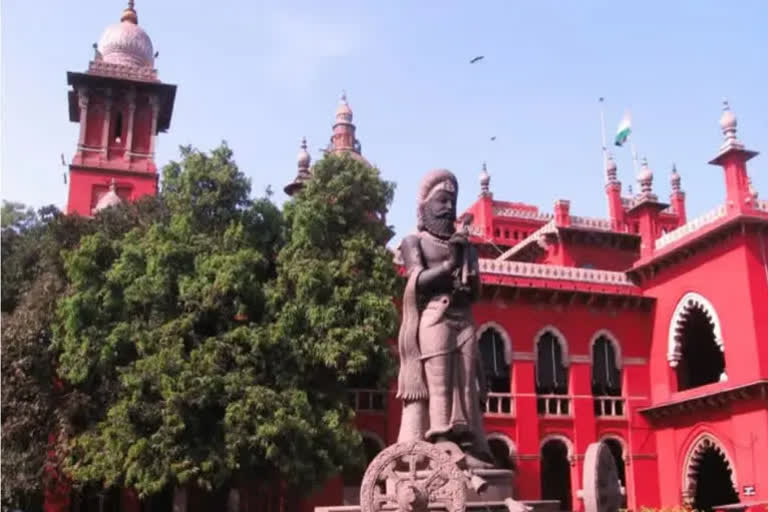Chennai: Hereditary priesthood in major temples has once again secured judicial imprimatur with the Madras High Court ruling that excluded them from the purview of the state in the appointment of priests. Even while upholding the validity of the DMK government's amendments to the rules providing for the appointment of archakas (temple priests) from all castes, the court has held that the agamic temples are exempt from it.
Though the DMK and its ideological mentor, the rationalist Dravidar Kazhagam (DK), have welcomed the judgment as a victory, it has also provoked a debate on the judiciary giving its stamp of approval for untouchability in temples. More so, since these agamic temples are the richest among all the temples under the HR&CE Department.
In the reasoning of the court, the appointment of archakas to the agama temples should be in accordance with the relevant agama sastras and not as per the statutory rules which would apply only to non-agamic temples. The First Division Bench of Chief Justice Munishwar Nath Bhandari and Justice N Mala, recalling the apex court judgments (1972 and 2006) holding that “the government's rule-making powers should not interfere with the rituals and ceremonies of temples,” made it clear that the appointment of archakas must be strictly in accordance with the agamas.
Further, it was pointed out that Saivite temples are governed by 28 agamas of which the most important are Karmika agama, Karana agama, and Suprabeda agama. The principal agamas of the Vaishnavites are Vikhanasa and Pancharatra. Significantly, the Division Bench verdict is in line with the supreme court judgment which said that the Vikhanasa Sastra permits only those born to Vikhanasa parents to be eligible to be priests who could touch the idols and perform the rituals and no one else, including pontiffs or acharyas or even other brahmins.
The judges then directed the constitution of a five-member panel, headed by retired HC judge M Chokkalingam and Madras Sanskrit College Executive Committee head N Gopalaswami to identify temples constructed as per agamas. This is intriguing since many temples in the state have strayed away from agamic tradition and there are difficulties in ascertaining the status of each temple.
Hence, the judgment had invited criticism from several quarters. “The thrust on agamas in the appointment of priests raises questions. For one, it upholds hereditary priesthood and the second is an authentic account of agamas themselves. Above all, this smacks of an Islamic – Abrahamic – approach of primacy to textualism,” says senior journalist K Venkataramaman adding that in the Orwellian sense all are equal but some are more than equal.
Earlier, the Justice Maharajan Committee (1982) in its report had said that none of the agamas are original texts but different versions of a single text. The report also pointed out that many temples have given up their agamic traditions. Later, the Justice AK Rajan committee (2006) too had substantiated this citing the example of the famed Kapaleeswar temple, Mylapore, constructed as per Kamika agama, accommodating Karana agama in its rituals and celebrations.
His report also made it clear that nowhere in the agamas it is said that only a particular caste should occupy priesthood. Both the committees have recommended the appointment of archakas from all castes. The movement for archakas from all castes, towards democratization of the religious sphere, and entry to the sanctum sanctorum was first spearheaded by social reformer E V Ramasamy Periyar in 1970.
He announced an agitation at all major temples in Tamil Nadu but it was given up following an announcement by the then Chief Minister M Karunanidhi to bring in legislation to remove hereditary appointments in every domain in temples. It was passed on December 2, 1970. However, it was struck down by a Constitution bench of the apex court on March 15, 1972.
Later, the DMK government of M Karunanidhi in 2006 established Archaka Training Schools at six places and nearly 207 students have successfully passed out of them. While 24 of them have got jobs in temples, others are still awaiting. Archaka activist V Ranganathan, who had been trained in this school, regrets that the present situation of brahmins only being priests in many temples and agama temples remaining their exclusive preserve smacks of untouchability.
“If temples are constructed and administered by all communities, they should not be denied the opportunity to be priests,” he says, adding that invoking rishis and other concepts to rationalize hereditary priesthood amounts to advocating untouchability. On the panel to ascertain agama temples, he expresses apprehension that this would probably give a voice to the RSS.
“When two previous committees have given their reports listing all the agama temples where is the need for a new panel?” he asks, adding that this could be a ploy to keep under the brahmin priests the temples that are cash rich and resourceful. He also demands that the government should appeal against the verdict.



